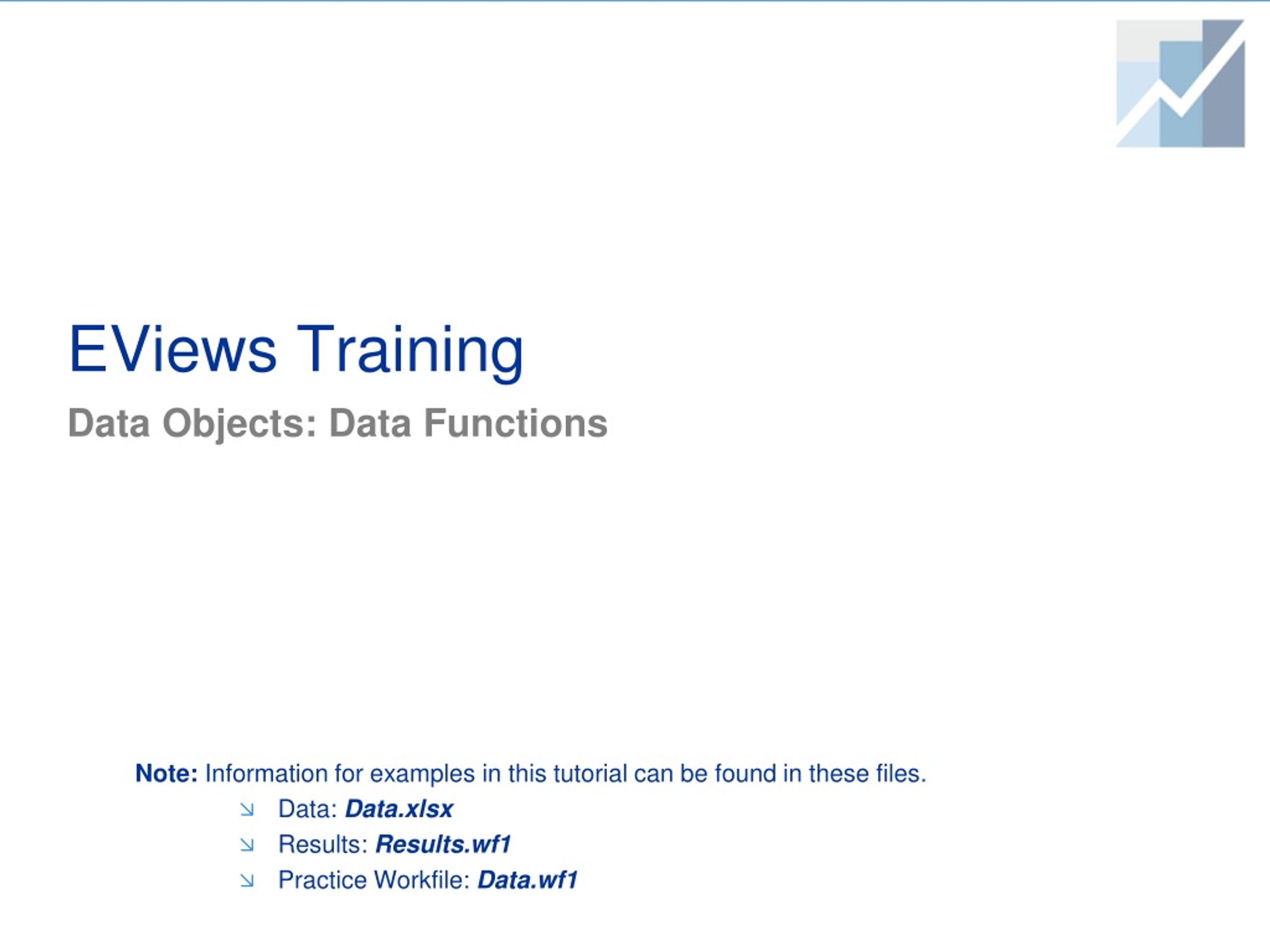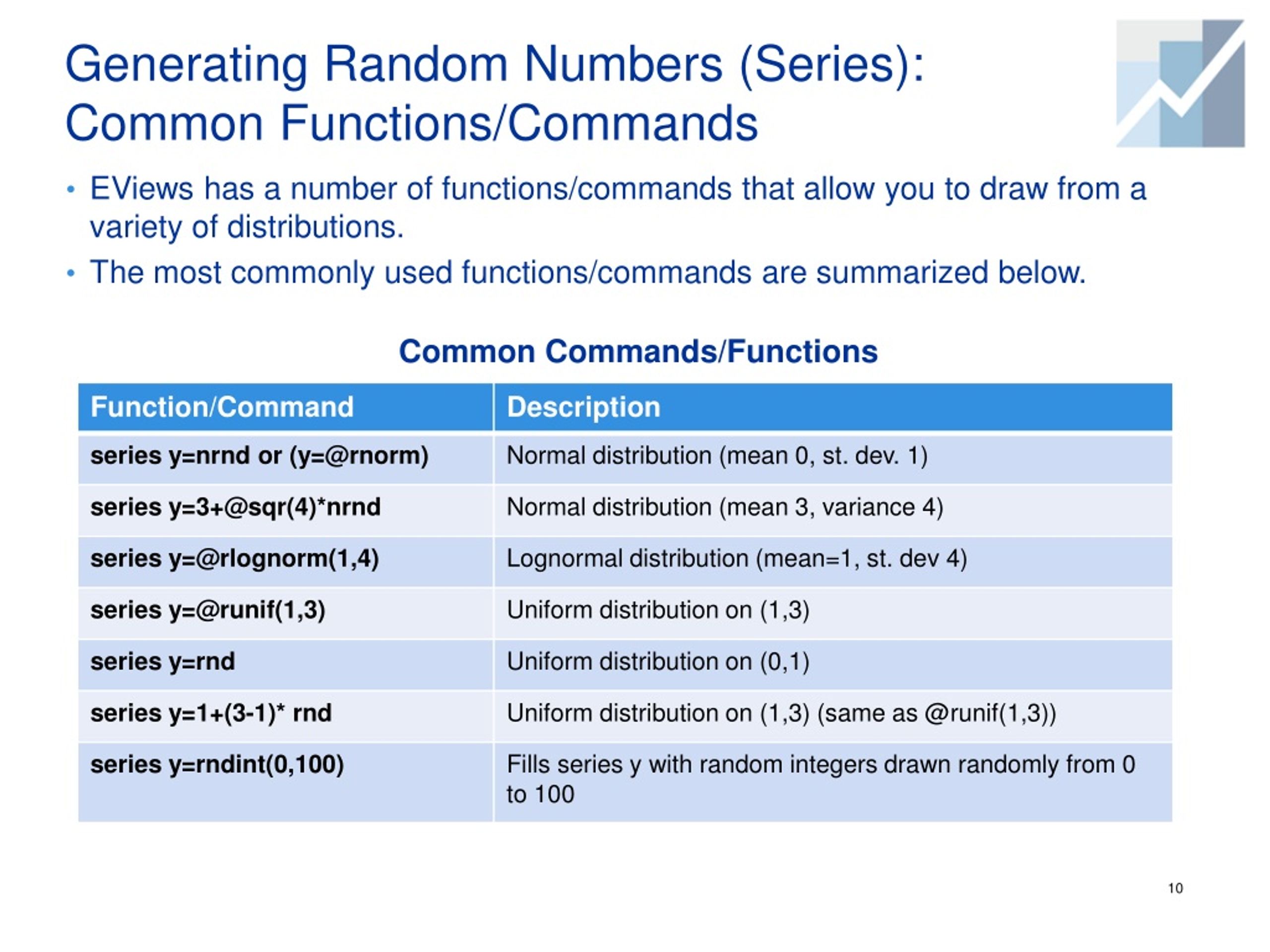

A complete alphabetical listing of the commands, views, and procedures in EViews.Ī program is a file of EViews commands. Read chapters 1, 2, 6.ĮViews Help Topics, Index: Commands Object DeclarationĮViews Help Topics, Index: Commands Object AssignmentĮViews Help Topics, Index: Commands Object CommandsĮViews Help Topics, Index: Commands Basic Command SummaryĮViews Help Topics, Contents: Command Reference. Besides being a record of your EViews sessions, a program allows you quickly change part(s) of your EViews session and repeat the whole process without having to go through all the steps manually using either point-and-click or individual command window statements.ĮViews Help: Command & Programming Reference (PDF file). The main use of commands will be as part of writing EViews programs. Point-and-click will leave no explicit record of the various options you selected and makes it difficult to evaluate how you obtained certain results. EViews commands are an alternative to point-and-click. You can scroll up to an earlier command, edit it, and hit ENTER. As you enter commands, EViews will remember them. The command is executed as soon as you hit ENTER. EViews commands may be typed in this window.
#Nrnd eviews series#
Provides a list of the operators used in expressions involving series and scalar values.īelow the menu bar is an area called the command window. You can use these expressions to calculate a new series from existing series, to describe a sample of observations, or to describe an equation for estimation or forecasting.ĮViews Help Topics, Index: Operator Numeric ExpressionsĮViews Help Topics, Index: Operator Operators. An EViews expression is a combination of numbers, series names, functions, and mathematical and relational operators. One of the most powerful features of EViews is the ability to use and to process mathematical expressions. Unnamed objects are not saved with the workfile, so they are deleted when the workfile is closed and removed from memory. If you do not name an object, it will be called “UNTITLED”.

You must name an object if you wish to keep its results. When you give an object a name, the name will appear in the directory of the workfile, and the object will be saved as part of the workfile when the workfile is saved. You can change views of an object using the View menu located in the object window’s toolbar or the EViews main menu. Only one window can be opened for each object and each window displays only a single view of the object at a time. Views of an object are displayed in the object’s window. An equation object has a representation view showing the equation specification, an output view containing estimation results, an actual-fitted-residual view containing plots of fitted values and residuals, a covariance view containing the estimated coefficient covariance matrix, and various views for specification and parameter tests. Series views also allow you to compute simple hypothesis tests and statistics for various subgroups of your sample. For example, a series object has a spreadsheet view, which shows the raw data, a line graph view, a bar graph view, a histogram-and-statistics view, and a correlogram view.
#Nrnd eviews windows#
Views are tabular and graphical windows that provide various ways of looking at the data in an object. There is more than one way to examine the data in an object. This association of views and procedures with the type of data contained in the object is what we term the object oriented design of EViews. Associated with each type of object is a set of views and procedures which can be used with the information contained in the object. An equation object is a collection of information related to the relationship between a collection of variables. For example, a series object is a collection of information related to a set of observations on a particular variable. Each object consists of a collection of information related to a particular area of analysis. Information in EViews is stored in objects. The area in the middle of the window is the work area where EViews will display the workfile window the various other windows that it creates. Some important EViews Commands are discussed below. The contents of the command area may be saved directly into a text file for later use: make certain that the command window is active, and then select File/Save As….

The command is executed as soon as you hit Enter. Below the menu bar is an area called the command window. In the EViews Window, just below the title bar is the main menu. You should see the EViews window when you launch the program.


 0 kommentar(er)
0 kommentar(er)
